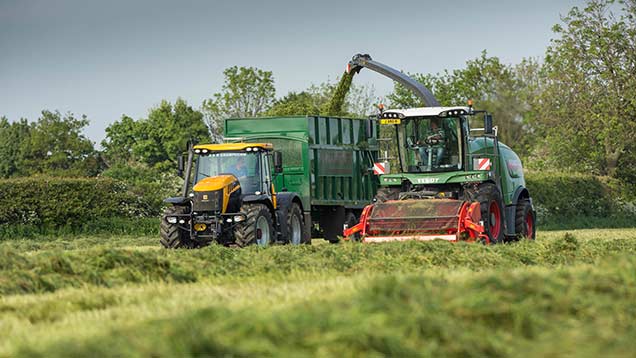Draff pitched as saviour to spring silage shortfall
 © Tim Scrivener
© Tim Scrivener Farmers with lower-than-expected first-cut silage yields should consider ensiling draff to make up the shortfall.
Scotland’s Rural College nutritionist Karen Stewart says the cold May and unsettled June are to blame for the smaller yields.
“Fortunately this coincides with a reasonably cheap and plentiful supply of draff [a residue from whiskey making], with many loads currently going south of the border as far as the Midlands.
“There is an opportunity for Scottish farmers to use this draff, or in some areas brewers’ grains from beer making, to help ensure they have sufficient feed available for next winter.”
Tips for ensiling draff
- Ensile draff in a layer of about 1m at the bottom of the pit to ensure good consolidation and air exclusion.
- There will be small losses in effluent, but these will be low compared with nutrient losses if draff is not completely compacted.
- If first-cut has already been made, draff can be ensiled alone or with a starch source – for example, processed bread, or with an energy/digestible fibre source – for example, potatoes, sugar beet or soya hulls. These products enhance the feed value of draff, reduce effluent and ensure good-quality winter feed is available.
See also: 11 things livestock farmers can’t live without
With higher energy and crude protein levels than average silage, draff will add nutritional value to winter feed.
“Typically ensiling draff in the summer offers a discount of £6-£10/t versus buying in the winter on a ready-to-feed basis,” adds Ms Stewart.
Stephen Kennedy, KW Feeds procurement manager for Scotland, says the average cost for delivery to farms in the Carlisle and Northumberland area in winter is £36-£38/t, but there is a shift in price to £30-£32/t in summer due to lack of demand.
Ms Stewart advises against the temptation to take larger second silage cuts to compensate for low first yields as this will reduce the amount of summer grazing available.
Instead she urges farmers to act now to ensile draff along with silage to help ease the demand on grazing, reducing the risk of poorer-performing grazing stock in future.
Farmers should contact draff suppliers as soon as possible to co-ordinate delivery within a day or two of silage making, advises Ms Stewart.
